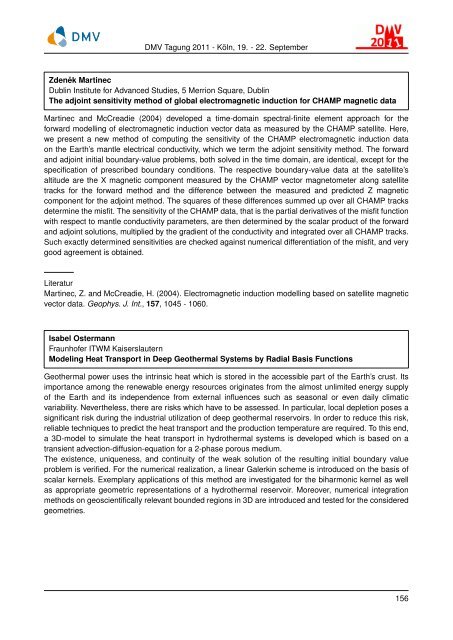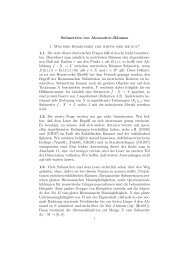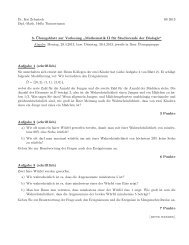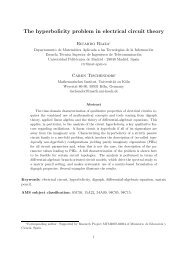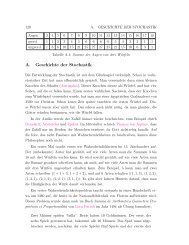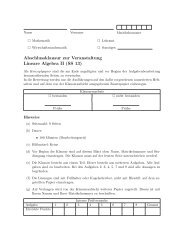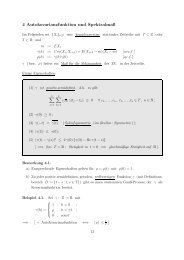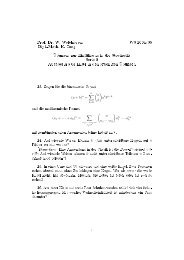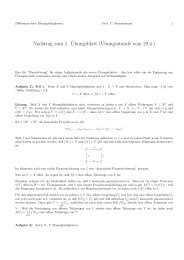Inhaltsverzeichnis - Mathematisches Institut der Universität zu Köln
Inhaltsverzeichnis - Mathematisches Institut der Universität zu Köln
Inhaltsverzeichnis - Mathematisches Institut der Universität zu Köln
You also want an ePaper? Increase the reach of your titles
YUMPU automatically turns print PDFs into web optimized ePapers that Google loves.
DMV Tagung 2011 - <strong>Köln</strong>, 19. - 22. September<br />
Zdeněk Martinec<br />
Dublin <strong>Institut</strong>e for Advanced Studies, 5 Merrion Square, Dublin<br />
The adjoint sensitivity method of global electromagnetic induction for CHAMP magnetic data<br />
Martinec and McCreadie (2004) developed a time-domain spectral-finite element approach for the<br />
forward modelling of electromagnetic induction vector data as measured by the CHAMP satellite. Here,<br />
we present a new method of computing the sensitivity of the CHAMP electromagnetic induction data<br />
on the Earth’s mantle electrical conductivity, which we term the adjoint sensitivity method. The forward<br />
and adjoint initial boundary-value problems, both solved in the time domain, are identical, except for the<br />
specification of prescribed boundary conditions. The respective boundary-value data at the satellite’s<br />
altitude are the X magnetic component measured by the CHAMP vector magnetometer along satellite<br />
tracks for the forward method and the difference between the measured and predicted Z magnetic<br />
component for the adjoint method. The squares of these differences summed up over all CHAMP tracks<br />
determine the misfit. The sensitivity of the CHAMP data, that is the partial <strong>der</strong>ivatives of the misfit function<br />
with respect to mantle conductivity parameters, are then determined by the scalar product of the forward<br />
and adjoint solutions, multiplied by the gradient of the conductivity and integrated over all CHAMP tracks.<br />
Such exactly determined sensitivities are checked against numerical differentiation of the misfit, and very<br />
good agreement is obtained.<br />
Literatur<br />
Martinec, Z. and McCreadie, H. (2004). Electromagnetic induction modelling based on satellite magnetic<br />
vector data. Geophys. J. Int., 157, 1045 - 1060.<br />
Isabel Ostermann<br />
Fraunhofer ITWM Kaiserslautern<br />
Modeling Heat Transport in Deep Geothermal Systems by Radial Basis Functions<br />
Geothermal power uses the intrinsic heat which is stored in the accessible part of the Earth’s crust. Its<br />
importance among the renewable energy resources originates from the almost unlimited energy supply<br />
of the Earth and its independence from external influences such as seasonal or even daily climatic<br />
variability. Nevertheless, there are risks which have to be assessed. In particular, local depletion poses a<br />
significant risk during the industrial utilization of deep geothermal reservoirs. In or<strong>der</strong> to reduce this risk,<br />
reliable techniques to predict the heat transport and the production temperature are required. To this end,<br />
a 3D-model to simulate the heat transport in hydrothermal systems is developed which is based on a<br />
transient advection-diffusion-equation for a 2-phase porous medium.<br />
The existence, uniqueness, and continuity of the weak solution of the resulting initial boundary value<br />
problem is verified. For the numerical realization, a linear Galerkin scheme is introduced on the basis of<br />
scalar kernels. Exemplary applications of this method are investigated for the biharmonic kernel as well<br />
as appropriate geometric representations of a hydrothermal reservoir. Moreover, numerical integration<br />
methods on geoscientifically relevant bounded regions in 3D are introduced and tested for the consi<strong>der</strong>ed<br />
geometries.<br />
156


